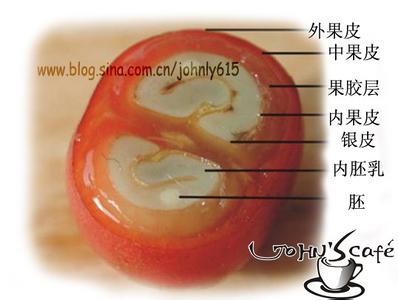Description of the characteristics and flavor of Colombian hand-made coffee beans
Description of the characteristics and flavor of Colombian hand-made coffee beans
How does the caffeine content change when using different beans? The previous comparison is the comparison of caffeine content in different extraction methods of the same kind of beans. Well, when using different coffee beans, in fact, if the amount of beans used is the same, the caffeine content of ESP is often higher than that of hand flushing. Because robusta beans are rarely used in hand flushing, and robusta beans are often used in matching beans. It is well known that the caffeine content of the same amount of Luodou is much higher than that of Arabica beans. Calculation method of caffeine content in a cup of coffee: coffee beans used (g) × caffeine percentage of this kind of beans. In other words, if you use 18 grams of Yega to make coffee, regardless of hand brewing, siphon, French pressure, Italian machine, American machine, or Philadelphia pressure, use Yega's 1.4% caffeine ratio, multiplied by 18. This formula is only a rough calculation, not very accurate, but for our questions, it reflects the answer. Why is this so? because of these extraction methods, the best extraction rate is 18% Murray and 22%. At this time, caffeine, as a more soluble substance, is close to complete extraction.
Colombian coffee is located in the Andes, where the mild climate, humid air and good rainfall make it very suitable for coffee growth. according to its geographical location, Colombian coffee is divided into three producing areas: northern, central and southern, in which there are six high-quality coffee producing areas in Colombia, Sierra Nevada,Santander, Cauca, Huila,Nari ñ o and Paisaje cultural cafetero.
The northern Sierra Nevada producing area is one of the high quality producing areas in Colombia, and the Santa Marta Snow Mountains is one of the few snowy mountains on the equator, and its caffeine is famous for its distinctive characteristics and high quality standards. The unique climate, abundant precipitation, cloud cover and shade planting make the coffee here full-bodied and nutty, giving people a unique sensory experience.
The north-central Santander producing area consists of two major geographical areas: the Magdalena Basin and the mountains of the eastern mountains. The Magdalena basin is relatively flat, with a dry and hot climate in the central plain.
The eastern mountains have rugged terrain, steep slopes and an altitude of 4000 meters. The climate is affected by different elevations, which makes it show a variety of meteorological zones, resulting in a rich aroma of coffee and moderate acidity. Smooth and consistent with tobacco flavor.

Important Notice :
前街咖啡 FrontStreet Coffee has moved to new addredd:
FrontStreet Coffee Address: 315,Donghua East Road,GuangZhou
Tel:020 38364473
- Prev

Regional varieties of Tanzania coffee beans produced by AAA flavor description
In 1980s, most coffee sales in Tanzania shifted from auctions to being sold directly to coffee cups made in the Songea region of Tanzania Coffee Management Council, reflecting the common characteristics of coffee in the north. However, the coffee produced by Kibo is due to the flavor loss during transportation that we mentioned.
- Next

Yega Xuefei G2 Coffee Bean Flavor description of taste variety grinding scale production area
Yega Chuefei G2 Coffee Bean Flavor description Taste Variety Grinding scale production area the so-called Yega Chefe flavor refers to strong aromas of jasmine, lemon or green citric acid, as well as sweet peach, almond and tea. The author's tasting experience has only one sentence: coffee entrance, flowers in full bloom! Except for the comfort of the taste buds and olfactory cells in the nasal cavity touched by flowers. In addition to the fragrance of flowers, meticulous mellow
Related
- Detailed explanation of Jadeite planting Land in Panamanian Jadeite Manor introduction to the grading system of Jadeite competitive bidding, Red bid, Green bid and Rose Summer
- Story of Coffee planting in Brenka region of Costa Rica Stonehenge Manor anaerobic heavy honey treatment of flavor mouth
- What's on the barrel of Blue Mountain Coffee beans?
- Can American coffee also pull flowers? How to use hot American style to pull out a good-looking pattern?
- Can you make a cold extract with coffee beans? What is the right proportion for cold-extracted coffee formula?
- Indonesian PWN Gold Mandrine Coffee Origin Features Flavor How to Chong? Mandolin coffee is American.
- A brief introduction to the flavor characteristics of Brazilian yellow bourbon coffee beans
- What is the effect of different water quality on the flavor of cold-extracted coffee? What kind of water is best for brewing coffee?
- Why do you think of Rose Summer whenever you mention Panamanian coffee?
- Introduction to the characteristics of authentic blue mountain coffee bean producing areas? What is the CIB Coffee Authority in Jamaica?

